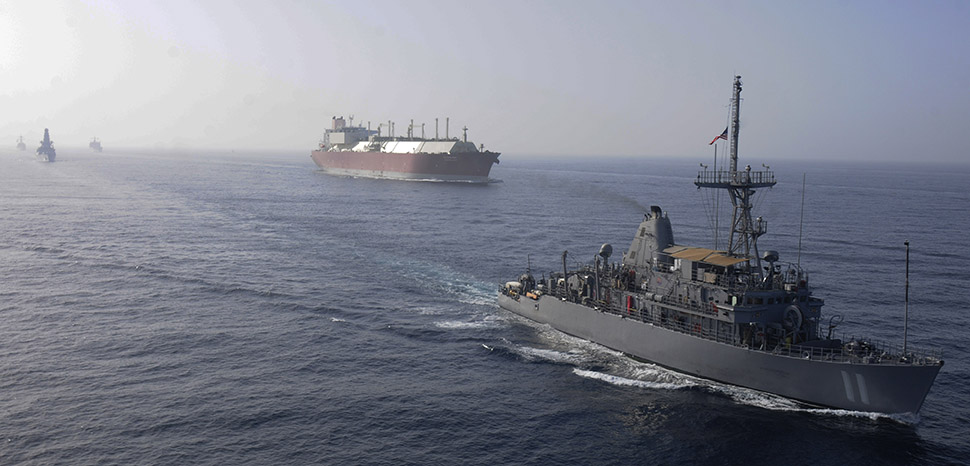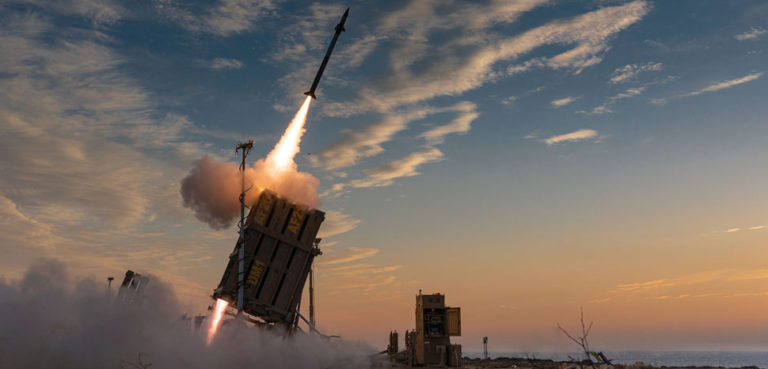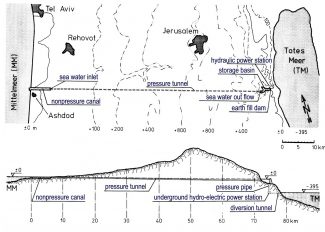Since October 2023, the Houthi, an Iranian-backed Zaydi Shi’a militia operating under the alias Ansar Allah, have engaged in violent operations against international shipping in the vital Red Sea trade route using Iranian missiles, drones, and marine vessels. After Hamas’ incursion into Israel and subsequent vicious assaults on military and civilian targets, the Houthi initiated drone and missile attacks from their Yemeni territory, the majority of which were intercepted by Israeli air defenses. Subsequently, the group directed its attacks towards vessels that it claimed had ties to Israel. The attacks have evolved into indiscriminate assaults, which have caused an escalating armed exchange in the Red Sea and its environs, and the potential exists for escalation into a more extensive geographical conflict.
The Red Sea and Its Strategic Importance
Shipping routes across the ocean are vital to international commerce. According to the International Chamber of Shipping, sea transport accounts for 30 percent of all shipping containers and 90 percent of all global trade in goods, worth $14 trillion USD. The Red Sea, via the Suez Canal, is not only one of the most travelled commerce routes in the world, but it is also the quickest and shortest sea route between Asia and Europe.
The canal is an essential component of one of the five most significant maritime routes, ranking second only to the English Channel and third after the Panama Canal; the Danish Straits and the Strait of Malacca, on the other hand, are the fourth and fifth busiest routes, respectively. Although the Red Sea is widely recognized as a strategically significant maritime passageway and region, its geopolitical context exacerbates the perilous nature of this choke point.
The Suez Canal facilitates the passage of approximately 17,000 vessels annually, representing approximately 12 percent of worldwide commerce or nearly $1 trillion USD worth of merchandise, including crude and refined oil, electronics, sneakers, wheat, and electronics. According to a 2016 estimate by the Energy Information Administration of the United States (U.S.), an annual volume of six million barrels of oil passed through the Suez Canal and five million barrels through the Bab el-Manded Strait, colloquially referred to as the “Gate of Grief,” a narrow strait between Yemen on the Arabian Peninsula and Djibouti in the Horn of Africa, slightly more than 17 nautical miles wide.
The blockage of the Suez Canal in March 2021 resulted in a significant disruption to international trade. An estimated $9.6 billion USD (equivalent to $400 million USD per hour) worth of goods remained immobilized for days due to the lengthy queue of hundreds of ships unable to use the canal following the Ever Given mega-container ship’s grounding. The incident brought attention to the vital importance of the waterway and its logistical and infrastructural vulnerability. Similarly, armed conflict, which disrupts the continuous flow of goods through the Red Sea, significantly undermines the economic viability of the Suez Canal.
Military Reverberations off the Red Sea
In light of escalating Houthi attacks targeting major commercial shipping through the Red Sea, some major shipping companies have decided to avoid the dangerous conflict zone in favor of much longer and more expensive but comparably safer routes around the continent of Africa.
The length of maritime journeys has been considerably reduced due to the Suez Canal, an artificial waterway that serves as an essential international trade route. As per the Suez Canal Authority, the shipping distance from Ras Tanura, Saudi Arabia, to Rotterdam via the Cape of Good Hope is 11,169 nautical miles. However, using the Suez Canal, which traverses the isthmus of Suez and provides vital navigational facilities between the Mediterranean and Indian Oceans, reduces this distance to 6,436 nautical miles, representing a reduction of 4,733 nautical miles, or 42 percent.
Shipments from Ras Tanura to New York via the Suez Canal cover 8,281 nautical miles, thirty percent less than the 11,794 nautical miles needed to travel around the southern tip of Africa. For instance, transporting goods around the Horn of Africa and through the South Atlantic to their final destinations in Europe and North America necessitates additional fuel and time, which contributes to inflation and further emissions. Despite the failure of many governments to address this issue, the consequences have been severe for the livelihoods of people worldwide.
One of the additional risks represented by other routes around Africa is the growing threat of piracy in the Gulf of Guinea and elsewhere along the coast of southwest Africa. According to the International Maritime Bureau (IMB) of the Commercial Crime Services (ICC), Nigerian piracy attacks have been on the rise and are at their greatest level since 2008. Of the total 51 reported attacks, 31 occurred in the West Arica region as a whole. This number accounts for 19 percent of all piracy incidents worldwide. According to the Piracy Reporting Centre (PRC) of the IMB, piracy incidents in Nigerian waters have been surpassed by both Ghana and Angola, with “two-thirds of incidents taking place while ships were anchored or berthed.” The frequency of piracy along the African coast could potentially increase in the event that additional shipping is diverted away from the Red Sea.
Significant financial repercussions have resulted from the Houthi attacks and the responses of businesses. Last year, freight costs increased by 80 percent within a single week. According to the Freightos logistics company, Europe’s rates have increased by 173 percent, while Asia-Mediterranean costs have doubled, and carriers have implemented surcharges per container ranging from $500 to $2,700 USD. As major oil companies avoid the Red Sea, crude oil prices have risen by 3 percent. The situation is further complicated by the recent cessation of oil production at the El-Sharara oilfield, located in the Murzuq basin in the southeast of Libya, which was prompted by protests. International oil and gas corporation British Petroleum, Hapag-Lloyd, the fifth-largest container shipping group globally, and Mediterranean Shipping Company (MSC), the largest shipping line globally, are among the largest multinational companies that have chosen alternative routes for transporting goods. After rerouting their vessels away from the Red Sea in response to Houthi attacks and the prospect of further assaults, other companies, including the Danish freight company Maersk, implemented fees to transport goods.
In late December, Maersk applied a transit distribution surcharge (TDS), which had an instantaneous impact on dozens of trade routes. After announcing that it would resume Red Sea voyages, the company stated that it would impose an emergency contingency surcharge (ECS) on routes beginning in 2024 on the grounds that moving through the Red Sea involves a variety of risks and challenges, as well as disruptions in shipping schedules.
Just before the start of the New Year, an approximate fifty percent of container ships that routinely transit the Suez Canal and pass through the Red Sea avoided the waterway due to the escalating number of attacks. Flexport Inc. reported that hundreds of commercial vessels with a capacity of around 4.3 million containers—roughly 18 percent of the world’s capacity—had altered their courses or intended to do so. The most significant disruption to global trade since the pandemic has resulted from the Houthi attacks and subsequent militarization of the region.
A Nexus of Geopolitical Tensions and Threats
The military confrontations in the Red Sea may be interpreted as a continuation of the Israel-Hamas dispute, encompassing significant non-state and state actors in the area and superseding national borders. Functioning as a proxy for Iran, the Houthi group is strategically located in the southeastern region of the Arabian Peninsula. This positioning enables them to effectively target international shipping. Similarly, Hezbollah, which is widely regarded as another proxy of Iran in Lebanon and has established a deep presence and influence within Lebanese society, poses a threat to Israel’s security from the north.
Hezbollah is not merely a proxy of Iran; rather, it is a formidable military force that stands as an equal partner to Iran. It strategically exploits Lebanon as a base of operations and has engaged in many aggressive actions, including launching rockets at Israeli positions, employing anti-tank missiles against armored vehicles, and executing strikes on military targets using explosive drones. In addition to these aggressive actions, Iran has issued a threat that the Mediterranean Sea could develop into a conflict zone should the U.S. and Israel persist in what Iran considers to be crimes against humanity in Gaza.
Although Iran has refuted any role in the Red Sea attacks, the Houthi strikes have become increasingly indiscriminate, engaging in multiple assaults against commercial shipping via anti-ship missiles, drones, and attack craft. In one instance, the group boarded and seized an Israeli-owned ship and its personnel via helicopter. Yahya Sare’e, spokesman for the Houthi military, has confirmed the increasing frequency of the attacks, which were previously sporadic occurrences. Israeli Prime Minister Benjamin Netanyahu has stated that it is a “time for war” and that the Israel-Hamas conflict will last for “many more months,” he has also referred to it as Israel’s “second war of independence.”
Sare’e has also declared that the “Yemeni Armed Forces affirm their continued support and solidarity with the Palestinian people in consistent with their religious, moral and humanitarian duty.” The Houthis, who are mobilized under the slogan “God is great, death to the U.S., death to Israel, curse the Jews, and victory for Islam,” have an estimated 100,000 fighters at their disposal. This contributes to the ideological complexity of the conflict, which is still in its nascent phase despite including more states and non-state actors and having the capacity to escalate.
Some states have already initiated a military response due to the imminent risk of further Houthi assaults on shipping. As a result, the geopolitical climate in and around the region of the Red Sea has evolved from a state of tension to a complex dispute and, presently, to a low-intensity conflict.
A Multinational Security Initiative
The initial scope and complexity of the Israel-Hamas conflict have undergone a transformation, encompassing not only local but also international aspects. Following the escalation of Houthi assaults and the endorsement of Israel’s activities in Gaza by Western governments, the conflict’s arena in the Red Sea has evolved from targeting merchant ships to warships.
The implementation of the US-led “Operation Prosperity Guardian,” a military-oriented effort involving the coordination of a multinational coalition to counter the Houthi attacks and the growing threats to international shipping and to ensure freedom of navigation in the Red Sea, has gone hand in hand with this since December 2023. The operation will “jointly address security challenges in the southern Red Sea and the Gulf of Aden, with the goal of ensuring freedom of navigation for all countries and bolstering regional security and prosperity,” according to a public statement by US Defense Secretary Lloyd Austin.
With variegated contributions, the coalition task force is composed of the United Kingdom (U.K.), France, Italy, Spain, Bahrain, the Seychelles, the Netherlands, Canada, and Greece. The U.K., for example, has sent several destroyers to serve alongside American and French warships. However, the task force has encountered reproach due to the inadequate contributions made by its members. Former Royal Navy commander Tom Sharpe opined that the U.K. should exhibit a greater degree of steadfast commitment to the operations. He emphasized the need for the British government to deploy the aircraft carrier HMS Queen Elizabeth to the Red Sea, urging Secretary of State for Defence Grant Shapps to “get the carrier out the door.”
The British government, however, has insisted that no additional vessels will be dispatched, citing apprehensions regarding a military escalation. This reluctance may be construed as an inability to comprehend the efficacy of one’s own military forces as well as the challenges associated with managing such complex conflicts while simultaneously alerting Houthi forces and other militant organizations to the constraints of their strategic and tactical options, planning, and implementation.
Other nations, specifically Canada, which is grappling with inherent recruitment challenges that have turned into a member-shortage “crisis”; an ongoing crisis of sexual misconduct; and severe financial constraints amid further defense spending cuts, has only furnished three staff officers whose responsibilities remain uncertain. Amid the escalating naval tensions between China and the Philippines, Australia’s decision via the government of Anthony Albanese to abstain from providing warships has drawn criticism on the grounds that the country does not possess the necessary military capabilities and political competencies to guarantee freedom of navigation in the global litorals. Moreover, Australia has expressed its concerns about impending security demands in the Indo-Pacific. In response to the Houthi threats to Indian maritime traffic, the guided-missile destroyers INS Kochi and Kolkata have been deployed thus far. The deployment of these vessels is not in aid of the coalition force; instead, they are operating exclusively to secure India’s objectives.
State (In)action and Conflict Escalation
The Houthi group has advocated for the annihilation of Israel for years prior to the outbreak of the Israel-Hamas conflict in October, but it took no action in response. In contrast, Hezbollah has characterized Hamas’ assault as “a decisive response to Israel’s continued occupation,” thus regarding it not merely as an initiation but rather as an extension of the conflict between Israel and Hamas, and more specifically as a reaction to how Hezbollah perceived Israel’s indiscriminately violent campaign against the Palestinian people.
In addition to escalating their assaults on ships traversing the narrow Bab el-Mandeb Strait, the Houthi have continued to target Israel with cruise and ballistic missiles and drones. The frequency of drone attacks perpetrated by Iran-backed militias against U.S. bases in Syria and Iraq, where the United States maintains 900 and 2,500 personnel respectively, has increased substantially since October 7, 2023. As of the first week of January 2024, there have been 115 such attacks. The al-Tanf garrison in Syria, the Bashur airbase in the vicinity of Iraqi Kurdistan’s Erbil city, and the al-Asad airbase in al-Anbar have been among the targets. The Islamic Resistance in Iraq and the Iraqi Shiite militia jointly issued an online statement wherein they claimed responsibility for the attacks on American military installations involving so-called kamikaze drones.
As the frequency of these assaults escalated, the United States responded by augmenting its military presence in the Middle East, dispatching an additional 300 personnel and launching retaliatory airstrikes against various militant groups, including Kata’ib Hezbollah (KH), or the Hezbollah Brigades, a radical Iraqi Shiite paramilitary organization. Given the increasing militarization and contestation in the region, it is not implausible that the U.S. and coalition powers will mount a more potent military response than the mere deployment of naval task forces. At present, there are increasing demands on the Biden administration to target Houthi strongholds, which increases the likelihood of both horizontal and vertical escalation.
President Biden has displayed a hesitancy to respond to escalating pressure to launch military operations against Houthi targets located within Yemen. Critics of employing military force against Houthi strongholds in Yemen might potentially contend that such an approach would serve Iran’s interests by enticing the U.S. into a proxy conflict and by heightening the likelihood of another expensive conflict between Saudi Arabia and Yemen, both of which are presently navigating a precarious truce. On the contrary, Washington’s implied acceptance of persistent Houthi attacks sets a precedent whereby they adopt a passive stance and essentially accept militant groups’ attacks without retaliation.
The notion of conflict escalation became increasingly prevalent throughout the Cold War, particularly with regard to the potential for nuclear exchanges between the two dominant global powers. Recent state and non-state interactions, the Russian invasion of Ukraine, and the Israel-Hamas conflict in particular, have caused the escalation of military conflicts to deviate from the established parameters of explicit Rules of Engagement (ROE) and international humanitarian law (IHL). These rules and regulations determine what actions are considered appropriate, acceptable, or unacceptable. The unwillingness of many countries—particularly Western governments—to uphold or abide by international law as well as their inconsistent approaches to resolving international disputes make the problem worse.
Although the October 7th attack by Hamas has not yet precipitated a regional conflict in the Middle East, it has laid the groundwork for the commencement of new phases and arenas of military exchange and operations in adjacent environs. As noted, diverting international shipping to other longer routes that are also highly susceptible to maritime piracy elevates the opportunities for militant groups operating well beyond the Middle East and its peripheral areas, especially given the ever-increasing demand for and attraction of oil as a vital energy commodity. Comparable to the Red Sea, Iran perceives the Eastern Mediterranean as a potential flashpoint region, thereby augmenting the probability of armed confrontation in that area.
The increasing tensions and military engagements in the Red Sea have the potential to attract more nations into the dispute, thereby escalating an already limited military exchange into a more extensive and protracted conflict. This is primarily due to the critical nature of the waterway, which affects all states, albeit to varying degrees, but also because states’ compliance with the U.S. as a de facto security guarantor in the region cannot be guaranteed. This has already been reflected in the refusal of various governments to participate in the joint naval task force, and by their decision in some cases to act externally to the combined operation.
Landlocked Ethiopia, a country of more than 120 million inhabitants—the second-most populous country in Africa—officially disbanded its naval headquarters in Adis Ababa in 1996, and its navy ceased to exist. Its only military watercraft, a tiny patrol boat, operates on Lake Tana. However, like other states in the region, “Ethiopia’s existence as a nation is linked to the Red Sea,” which depends on “balanced mutual sharing,” as Ethiopian Prime Minister Abiy Ahmed expressed last October.
The potential for nations to respond in a unilateral, disproportionate, or otherwise unconventional manner, which may incite violent responses from neighboring states and non-state actors in the vicinity. Whenever states act unilaterally and in pursuit of their own national interests, there are inherently perilous consequences, particularly when they conflict with the interests of other nations or actors. As an extension of the ongoing Israel-Hamas conflict, the developing Red Sea conflict has already demonstrated its potential to act as a perilous precursor to additional destabilizing actions by various geopolitical actors.
Despite the historical significance of de-escalation, economic considerations, the imperative to ensure secure navigation in the Red Sea, and the self-interest of nations may serve as a legitimate justification and pretext for extending military operations into additional regions in the Middle East to counter other militant groups. Such a course of action has the potential to yield unanticipated and exponential effects.
It is plausible to suggest that states vying and competing for control of global supply chains could spark modern power struggles and conflict. While scholars have posited that economic interdependence is crucial for preserving structural peace and stability, as evidenced by the absence of major interstate conflict in the Asia-Pacific comparable to the Second World War, disruptions in interdependence may also fuel great power politics and provide opportunities for desperate competition among states or for some states to ensnare vulnerable parties rendered even more susceptible to supply chain deterioration or the inaccessibility of commodities and critical economic resources. Such economic opportunism and coercion could occur anywhere, as historical evidence demonstrates the existence of instances of this type of power politics. This situation gives rise to additional questions and concerns regarding the potential occurrence of conflict, which may be precipitated by heightened economic competition, further complicated by limited access to global supplies and resources.
Pathway to a Wider Conflict?
With the war in Gaza nearing its 100th day, the Houthi assaults on vessels in the Red Sea underscore the intricate nature of this conflict and the need to carefully contain it and prevent its escalation beyond its current boundaries. The regional political landscape and the current security situation have significantly influenced the wider consequences of the Israel-Hamas conflict and Israel’s ongoing military actions in Gaza and against the Palestinian people. These dynamics have revealed the challenging nature of mobilizing Western and international responses, the risks of taking unilateral action, and the limitations, whether due to the willingness or capabilities of national contributions, in resolving the escalating situation.
Furthermore, the U.S. has demonstrated its reluctance and the challenging position it faces as a security provider while being closely aligned with Israel as its primary regional partner, which has exhibited little self-control in its retaliatory actions against Hamas and a tendency to extend its security practices beyond its borders. This is illustrated by the military assaults on Houthi weapons storage facilities in Yemen, which the Israel Defence Force (IDF) is believed to have orchestrated, according to the Saudi-owned Al-Hadath news network. Although every state has an interest in stabilizing the situation in the Red Sea, their influence varies.
Presently, the situation is deteriorating, and while there is a greater sense of urgency to find a solution, the absence of adequate security management and the failure to prioritize the shared security requirements within and beyond the Red Sea region are among the most problematic aspects of the situation.
Dr. Scott N. Romaniuk is a Newton International Fellow at the University of South Wales’ Faculty of Life Sciences and Education, the United Kingdom, and a Non-Resident Fellow at the Taiwan Centre for Security Studies (TCSS), ROC.
Professor Christian Kaunert is Professor of International Security at Dublin City University, Ireland. He is also Professor of Policing and Security, as well as Director of the International Centre for Policing and Security at the University of South Wales. In addition, he is Jean Monnet Chair, Director of the Jean Monnet Centre of Excellence and Director of the Jean Monnet Network on EU Counter-Terrorism (www.eucter.net). Previously, he served as an Academic Director and Professor at the Institute for European Studies, Vrije Universiteit Brussel, a Professor of International Politics, Head of Discipline in Politics, and the Director of the European Institute for Security and Justice, a Jean Monnet Centre for Excellence, at the University of Dundee.




